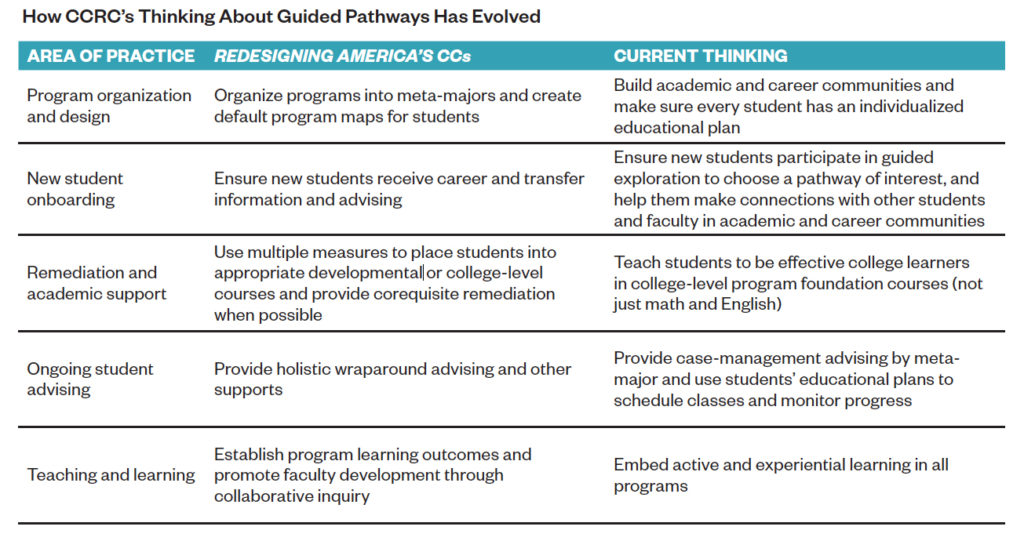In 2015, the Community College Research Center (CCRC) at Columbia University published a book that catalyzed the movement at community colleges in developing guide pathways, which were designed to help students focus more on potential career paths and required courses. Redesigning America’s Community Colleges: A Clearer Path to Student Success was quickly not only a must-read in the sector, but it also served as a guide and playbook for public two-year colleges trying to develop their own pathways structure.
Six years later, CCRC this week released a report that describes how its “thinking about guided pathways has evolved” based on research it has conducted on guided pathway efforts since the book was published.
The center makes the following recommendations that it thinks is “essential to achieving more equitable student success”:
- Organize all programs by meta-major and backward-map them to ensure they prepare students to secure a family-supporting job or transfer to a four-year college with no excess credits in their field of interest.
- Redesign the onboarding experience to help all students explore their interests and options, connect with an academic and career community, and develop an individualized educational plan aligned with their career and transfer goals.
- Ensure that every student is able to take a well-taught course on topics that interest them in their first term.
- Reorganize advising to enable case management by field, and monitor progress and schedule classes using students’ individualized educational plans.
- Integrate active and experiential learning throughout programs, both inside and outside the classroom.

An eye toward equity
Colleges are improving outcomes after implementing guided pathway practices, the report says. But equity gaps remain by race/ethnicity, income, age, and other sociodemographic factors.
“Colleges must apply an equity lens to their practices to ensure that all students have equal access to — and support to complete — the high-opportunity program pathways they have created,” the report says.
CCRC also has started to examine how colleges that are more advanced in implementing guided pathways are building on their reforms to advance equity and opportunity for their students — particularly those from underserved groups — and meet the talent needs of local employers. These include:
- Supporting faculty to integrate active teaching and learning in program foundation courses and throughout the curriculum.
- Expanding opportunities for experiential learning to all students, not just those in career-technical programs.
- Extending guided pathways programs and practices into K-12 schools through dual enrollment to build on-ramps to high-opportunity college pathways, particularly for low-income students and students of color.
Pathway workshops: AACC next month will launch a series of online workshops focused on guided pathway colleges and their partners.

